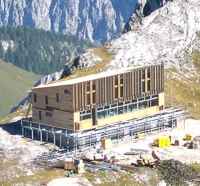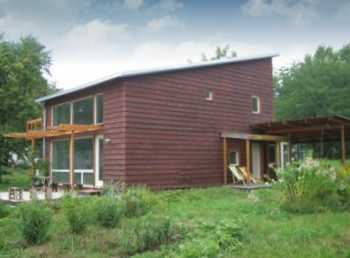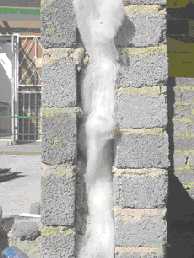| The integral workshop: How to design a passive house in a specific climate It would be a pitfall to just copy the European passive house design, especially the details used for insulation, windows and ventilation in a completely different situation:
Therefore, the specific solution for a passive
house has to be adapted to the country and the climate under
consideration. On the other hand: Goals are the same in all climates and for all
countries and physics is the same all around the world. Thus the
solution method can well be applied independent of the circumstances.
And this will be the first thing to do then starting a passive house
development in a new region. for the peak heating load, independent of the climate.
The reason is, that at peak heating loads lower than this value
of 10 W/m², the ventilation system may easily be used for heating.
Working group no. XII will deal with the methods – how to design a Passive House in different climates. This working group will focus on concepts, parametric studies,
demonstration projects and experiences from passive houses already
built in different climates. Working
group No. XII is part of the international sessions. Only papers
in english are accepted for this working group. Time
schedule of the 10th International Conference on Passive Houses
in Hannover The PHI is
not responsible for the content of linked web-pages. |
| Submit an Abstract | |
| > | Dead line 01.12.2005 All contributions to the emphases are welcome. (see authors pages) |
| > | Tips how to submit an abstract see at the authors pages. |
| > | 2005-10-14 The End of Cheap Energy |
| > | 2005-10-08 Passive Houses: Thermal Comfort |
| > | 2005-09-30 Courage to discuss concepts |
| > | 2005-09-23 Implementation of energy efficiency in old buildings |
| > | 2005-09-17 Passive Houses are not restricted to residential buildings any longer |
| > | 2005-09-09 Adressing Problems - Naming Problems - Solving Problems |
| > | 2005-09-04 Designing, Redesigning, Creating Scopes - Architecture with the Passive House |
| > | 2005-08-14 Exchanging Experiences – Refurbishment of Old Buildings by means of Passive House Elements (Refurbishment) |
| > | 2005-08-18 Success by Using the Passive House Conce |
| > | Schiestl-House:
A Passive House 2154 m above seelevel (loosgelöst...(German))  |
| Download | |
| > | 2005-08-14 Folder of the 10th International Conference on Passive Houses (fanfold)  PDF 248 kb PDF 248 kb |
| > | 2005-08-14 Abstract form (10PH Conference Abstract) DOC 10 kb |

